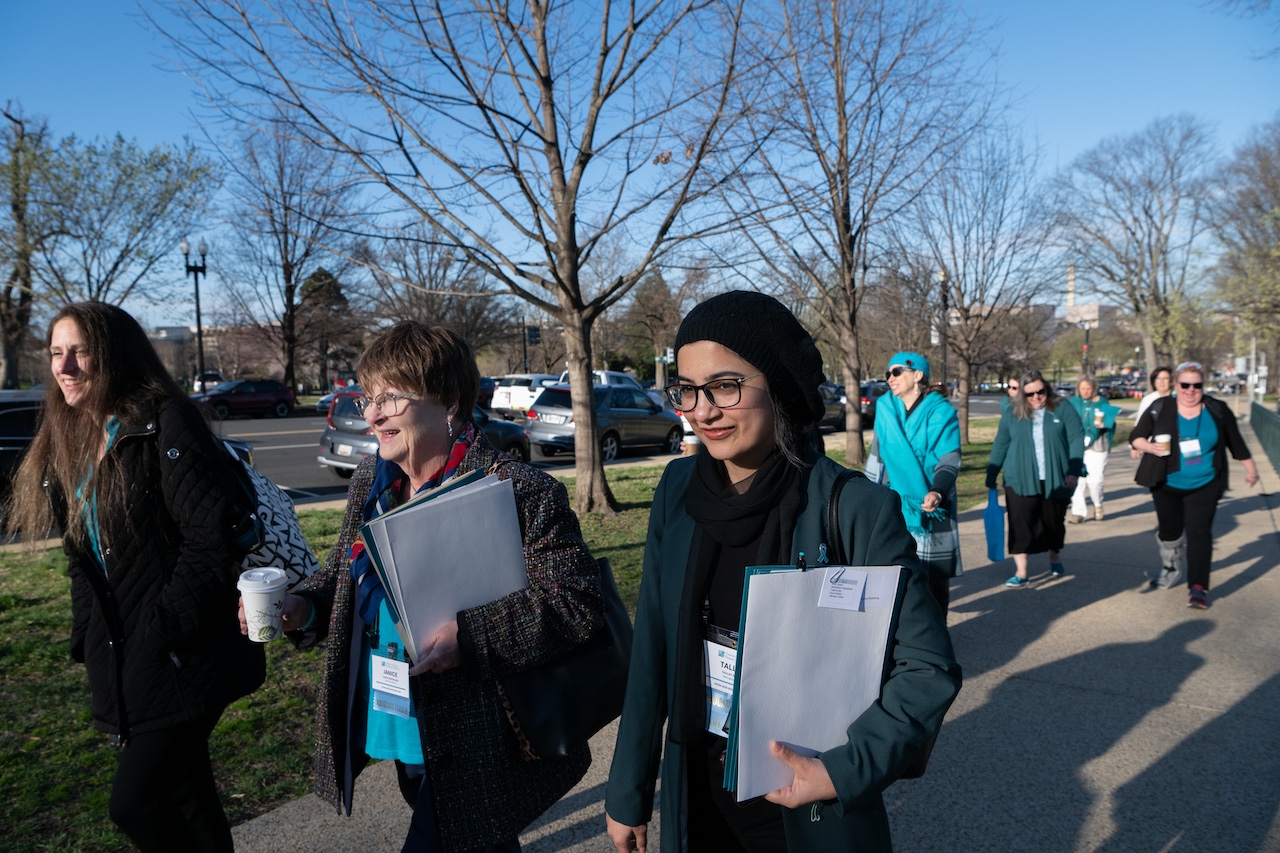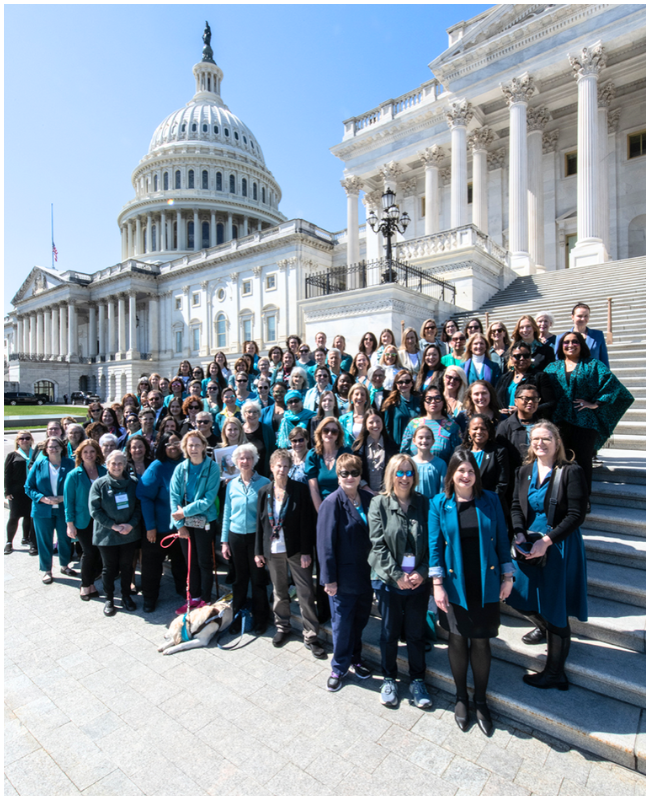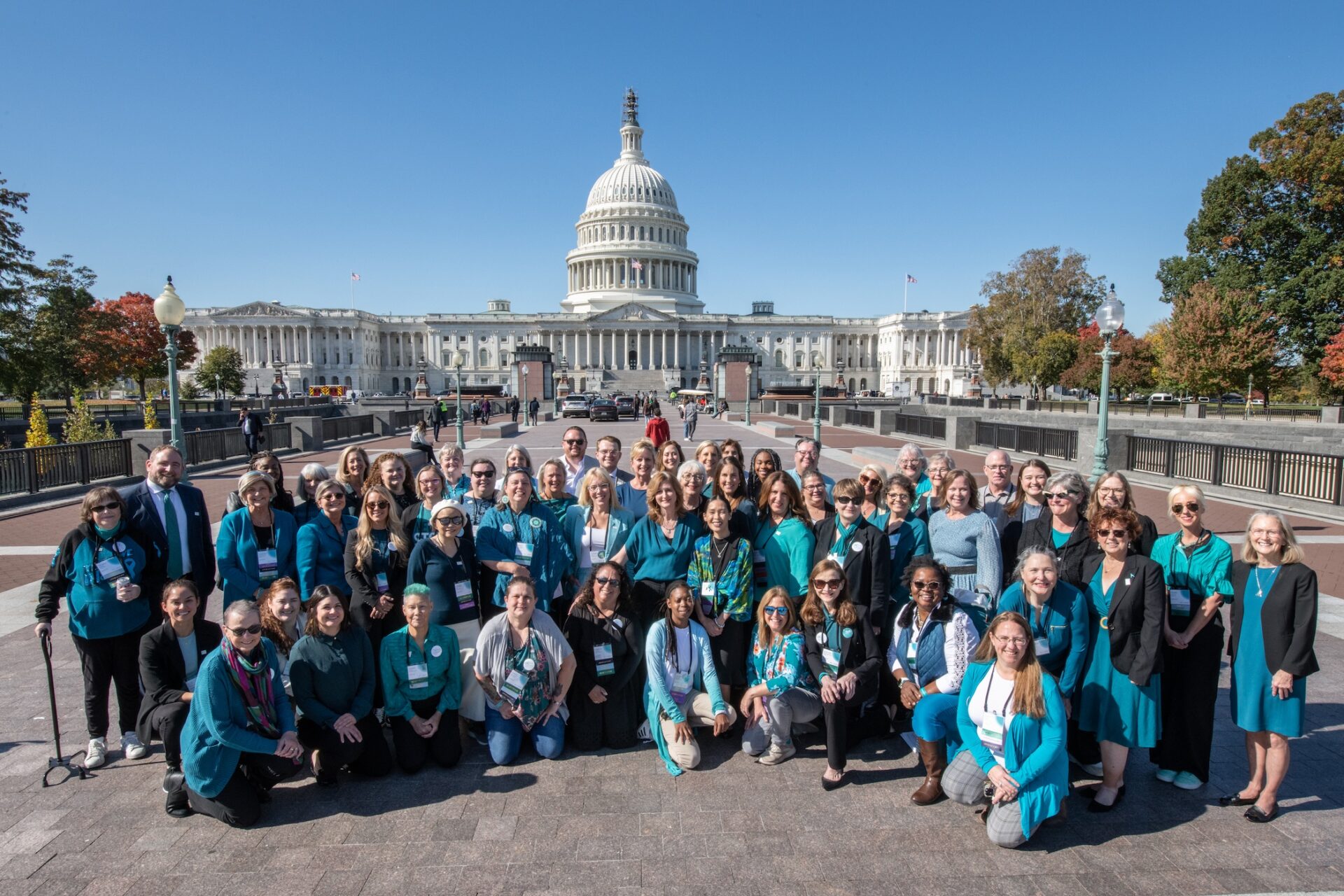Promising new combination treatments for ovarian cancer
Dr. Joyce Liu, MD, on behalf of researchers from the National Cancer Institute (NCI) and Dana Farber Cancer Institute (DFCI), presented striking results from a Phase II trial testing the combination of the PARP inhibitor olaparib and the anti-angiogenesis drug cediranib (which blocks tumors from creating new blood vessels) in patients with recurrent platinum sensitive ovarian cancer. Overall, patients who received both drugs had an increase in progression free survival (PFS) of 17.7 months compared to 9.0 months in patients who only received olaparib. BRCA positive patients had only a slight increase in PFS (19.4 vs. 16.5 months), which is to be expected since PARP inhibitors are known to be highly effective in BRCA positive women. Yet, especially striking are the results in women who do not have a BRCA mutation – they had an increase of nearly 11 months in PFS (16.5 vs. 5.7 months). You can read more about the study here.
Dr. Ursula Matulonis, MD, from DFCI also presented a Phase I trial suggesting that the combination of olaparib and BKM120 (a drug targeting the PI3K pathway in cancer cells) may be effective in treating women with high-grade serous ovarian cancer or triple-negative breast cancer. This study was funded by a Stand Up to Cancer Dream Team Translational Cancer Research Grant.
Early studies suggest immune therapy promising for ovarian cancer
One of the most exciting areas in cancer therapeutics over the past few years has been the development of a class of drugs that recruits a person’s immune system in the fight against cancer. Most of the enthusiasm has been around biologic drugs that target a T-cell protein called PD-1 to help T-cells recognize and kill cancer cells. This year, Dr. Junzo Hamanishi, MD, PhD, from Kyoto University presented a Phase II study of a PD-1 drug called nivolumab in a small group of patients with highly-platinum resistant ovarian cancer. His early results are promising: 17 percent of patients responded to therapy with nivolumab and 2 of the 20 patients tested had complete remission. Researchers are currently looking for biomarkers that may predict which patients respond best in designing future studies. You can learn more about the study here.
Using ovarian cancer avatars to find the best treatment
Another hot topic at the meeting was the use of ovarian cancer avatars to find the best drug to treat an individual’s cancer. An avatar, in this sense, is a mouse that carries a tumor identical to the patients, made through a process called tumor grafting or xenografting. Typically, each patient will have multiple identical mice produced, each of which receives a different medication. Observing how each mouse reacts to treatment helps doctors see to which drugs patients are most likely to respond. At the ASCO meeting, Dr. Paul Haluska, MD, of the Mayo Clinic presented proof of concept data from a new clinical trial he is running using avatars (which he called “ovatars”). These data suggest that the use of avatars might be a viable way to pick the very best drug immediately for people with difficult-to-treat ovarian cancer. For more, click here (free registration required).
Many women still don’t receive standard of care for ovarian cancer
Despite all the exciting data presented at ASCO, researchers are still finding that many women do not receive ovarian cancer treatment that follows national guidelines.
Ovarian cancer treatment guidelines set out by the National Comprehensive Cancer Network (NCCN) dictate that women with stage III and IV ovarian cancer should undergo debulking surgery, done by a gynecologic oncologist, and then have six rounds of IP chemotherapy (delivered intraperiotoneally, rather than via IV). Last year, Dr. Robert Bristow, MD, from the University of California, Irvine, published data showing that approximately half of women (54 percent) have their debulking surgery done by a gynecologic oncologist and around 60 percent receive the proper chemotherapy. However, overall, only 37 percent of patients receive both the correct surgery and chemotherapy. At this ASCO, a pair of posters were presented that further demonstrate how few women receive standard of care therapy for ovarian cancer.
Dr. Alexi Wright, MD, MPH, of the DFCI, examined the number of women treated at NCCN Cancer Centers who received IP chemotherapy instead of IV chemotherapy. Overall, she found that fewer than half of women were treated with IP chemotherapy, despite a huge jump in the survival rate of women who are (the five year survival rate is 63 percent for those treated with IP vs. 45 percent for IV). For more on Dr. Wright’s study, click here.
Furthermore, Dr. Larissa Meyer, MD, MPH, of MD Anderson Cancer Center, found that only 56 percent of Medicare patients treated for ovarian cancer between 2002 and 2009 received standard of care therapy. Among those who did not receive standard therapy, 17 percent of patients received chemotherapy only, 11 percent received surgery only, and 16 percent did not receive either. Survival rates among patients who did not receive surgery and chemotherapy were dramatically lower than average rates.


